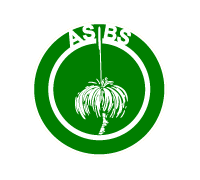
ASBS Newsletter – Book Review
Malesian Seed Plants. Volume 1 - spot characters. An aid for identification of families and genera.
written by M.M.J. van Balgooy
(From ASBS Newsletter Number 92, September 1997)
Publisher: Riksherbarium/Hortus Botanicus, Leiden.
Orders to: Backhuys Publishers, PO Box 321, 2300 AH Leiden, The Netherlands [Fax 31 71 5171856. Email backhuys@euronet.nll. ISBN 90-71236-31-5.
Specifications: soft cover, 238 mm x 159 mm, 154 pp., line-drawings.
Retail price: Dfl. 50.00.
This is the first of a projected three volume work on Malesian seed plants; the second and third volumes will be family portraits of tree and non-tree families respectively. The 105 spot characters in this volume cover 12 categories: habit (13 states), stem or branch (5), exudate (4), smell (2), indument (6), leaves with glands (1), petiole/rachis (6), lamina (26), inflorescence (9), flower (14), fruit (9), seed (4). Each state has a sentence or two of explanation plus a list of families, genera and occasionally species, which exhibit the character. States are illustrated, often with more than one example taken from published revisions and other sources. Geographic scope is essentially Malesian though some Pacific and Australian taxa are included.
The majority of characters are traditional spot characters used for sorting specimens, compiled over the years by Max van Balgooy but based on the collective knowledge of such notabilities as C.G.G.J. van Steenis, R.C. Bakhuizen van den Brink Jr and F.H. Hildebrand. The author, pressed by his colleagues to publish this work suggests in his introduction that publication may be premature.
I would agree with his advisers; there are corrections, refinements and elaborations which could be made but my immediate response after flicking through the pages was that such information should be made available as soon as possible. Ecologists, foresters and naturalists in the Malesian region would surely agree. The desperate need for identification aids for this complex flora is underlined by Prof. Rifai who points out, in his preface to the book, that of the estimated 36,000 species in Malesia, a mere 15% are treated in FM.
The characters, according to the author, have all been defined by the Rijksherbarium botanists without any recourse to the literature. Botanists familiar with the spot characters of Hutchinson (1959, 1967) and Metcalf and Chalk (1950, 1979, 1983) would probably wonder why this great pool of information has not been utilised. Even so, the book has a wealth of data on (mostly) macro characters, micro characters such as hair types, one anatomical feature (ruminate endosperm), various field characters and attributes such as parasitism.
Readers are invited to submit additions and corrections for a future edition and I predict that the most common suggestion would be the production of an interactive key along the lines of Hyland & Whiffin (1993). Balgooy himself mentions the enormity of the task which confronted him and other young botanists of remembering all the detail of what amounts to be the accumulated wisdom of the Rijksherbarium. A multi-entry key is the only practical way of dealing with the approximately 1560 taxa linked to one or more of the 105 characters in the book. An electronic product would also permit a greater use of Leiden's abundant resource of illustrations and allow for frequent and affordable upgrades.
There is no doubt, as the author acknowledges, that the data could be improved upon; in the meantime, it provides an excellent first step towards building character sets for the Malesian flora and I am sure users in the region will find the volume useful and be inspired to contribute improvements as invited by the author.
Reviewer: Clyde Dunlop
References
Hutchinson, J. (1959). The Families of Flowering Plants. Volume 1. Dicotyledons. 2nd ed., 510 pp. (OLJP: London).
Hutchinson, J. (1 967). The Genera of Flowering Plants. Volumes 1 & 2, Dicotyledons, 516 & 659 pp. (OLTP: London).
Hyland, B.P.M. & Whiffin, T. (1993) Australian Tropical Rain Forest Trees, An interactive identification system. (CSIRO: Melbourne).
Metcalf, C.R. & Chalk, L. (1979). Anatomy of the Dicotyledons, Volume 1. 2nd ed., 276 pp., 18 plates. (OUP: Oxford).
Metcalf, C.R. & Chalk, L. (1983). Anatomy of the Dicotyledons, Volume 2. 2nd ed., 297 pp., 11 plates. (OUP: Oxford).